Kitchen furniture fronts
Practical fronts should be easy to clean + hard to get dirty. Only by combining these two criteria will the kitchen look clean. The easiest to care for are glossy smooth fronts without handles. They are easy to clean and have no joints where dirt can get stuck.
The only caveat: dark gloss gets dirty quickly, so you should choose only light shades.
Matte fronts have a porous rough surface where dust can get stuck. On light doors, dirty abrasions form at the points of contact, which spoil the entire appearance. On too dark ones, like with gloss, fingerprints remain, which are quite difficult to wipe off. Therefore, if the kitchen is supposed to be matte, choose medium tones.
As for milling, you should know: the more decorative details, the more difficult it will be to wash the cabinet doors. If decor is necessary, choose solid sheets without sharp abutments: smooth transitions are easier to wash out.
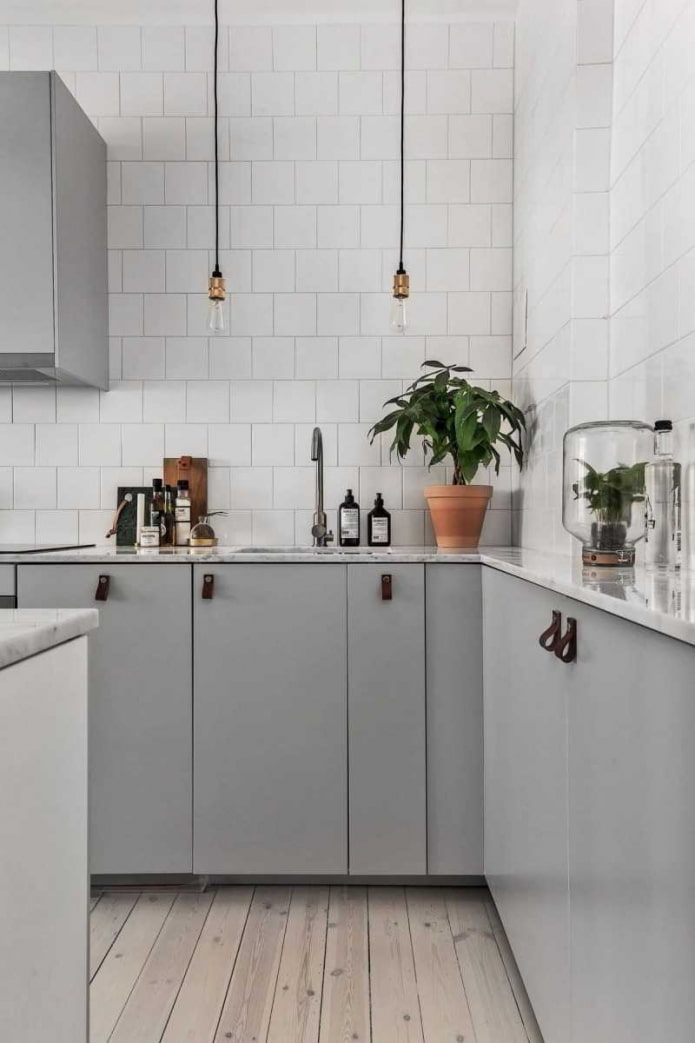
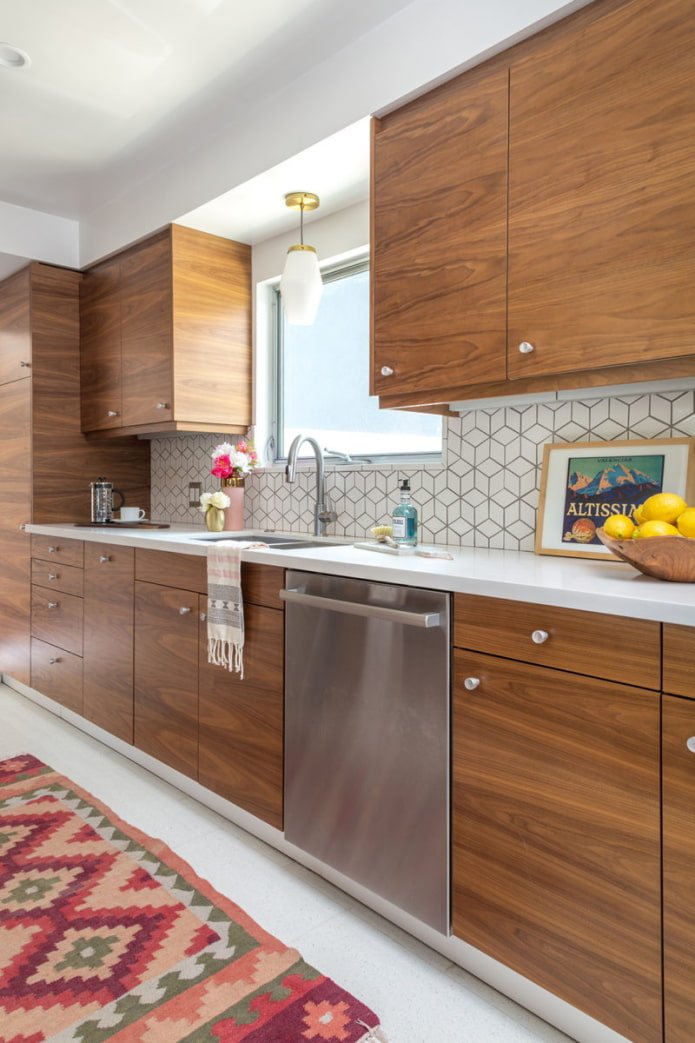
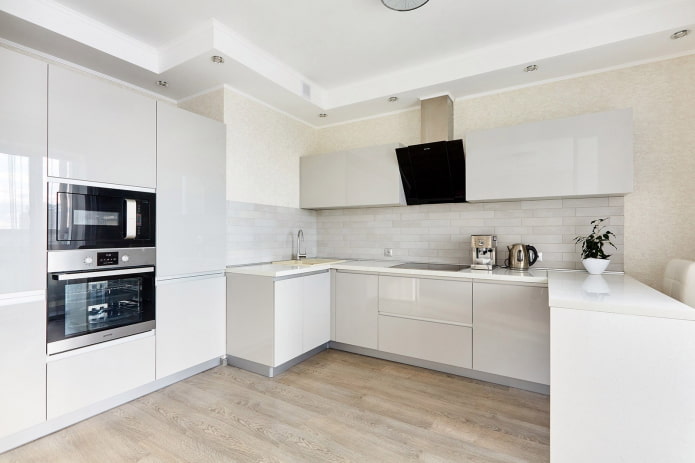
Sink
There are three main types of kitchen sinks: steel, stone, ceramic. The first are the cheapest. They do not absorb dirt, are easy to clean, and allow the use of aggressive cleaning agents. But if the sink is chrome-mirror, keep in mind: you will have to wipe it dry every time after turning on the water to maintain its appearance, otherwise there will be streaks. Another disadvantage is that the surface is easy to scratch, so rubbing with an abrasive sponge is not recommended.
Stone sinks are stronger than metal ones, but they are more difficult to care for: you will have to clean them with special products, and also monitor the penetration of coloring products (beets, coffee). Light stone sinks are some of the most insidious, they can be damaged even by tea.
Ceramic ones are similar to regular bathroom sinks. They are made of porcelain or earthenware, and covered with enamel on top. The surface, although white, is wear-resistant, easy to clean, does not suffer from water stains, does not get stained from coffee, tea, beets.
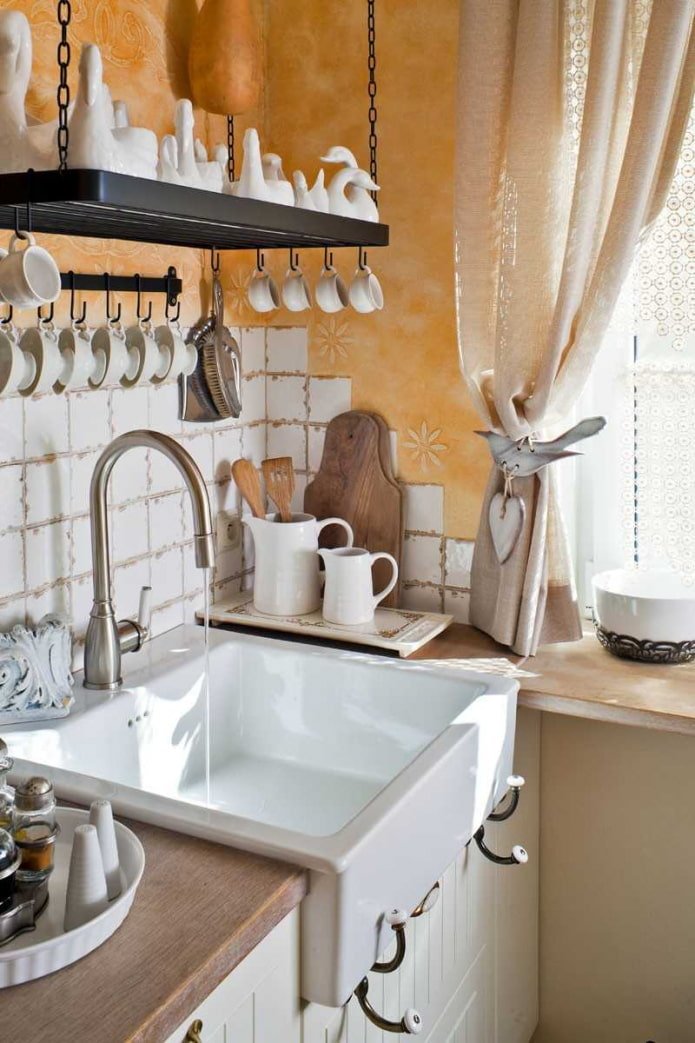
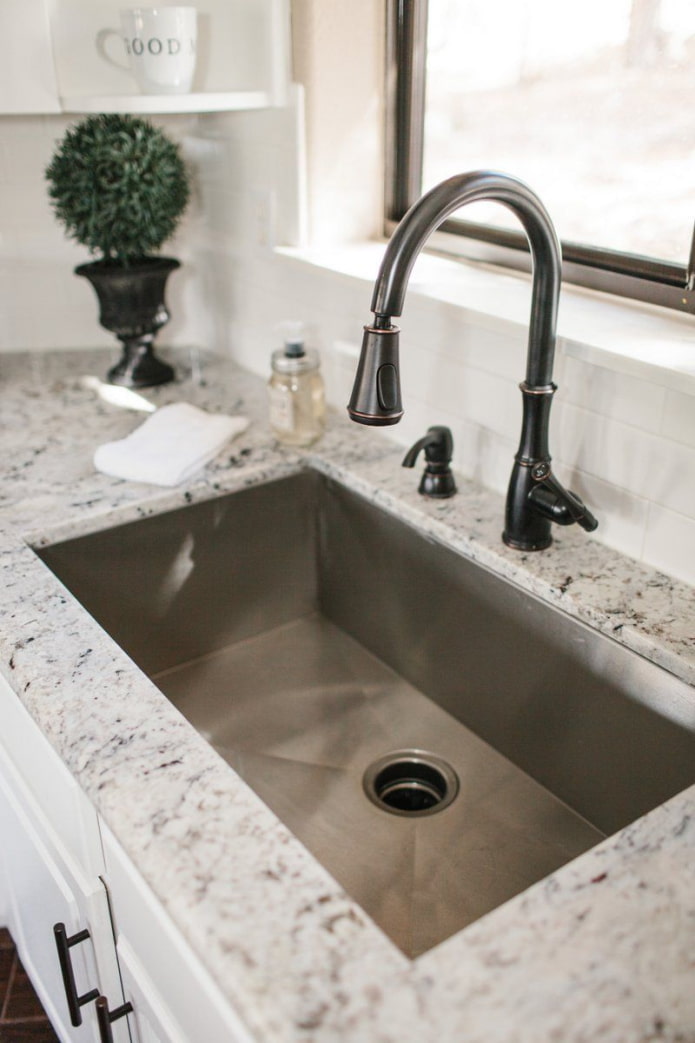
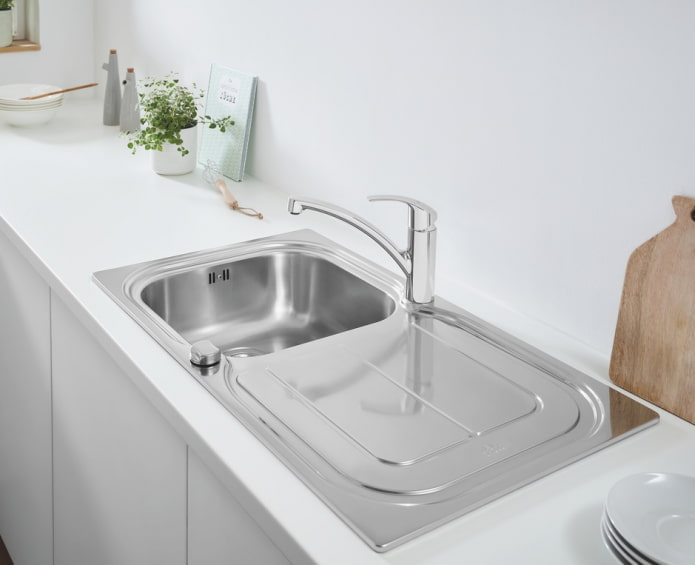
Countertop
Characteristics by which you can evaluate the practicality of the countertop, in addition to color:
- easy to clean;
- does not scratch;
- does not absorb dirt;
- not afraid of heat.
The cheapest option is laminated chipboard. It meets only two characteristics: does not absorb, easy to clean. It is prohibited to put hot things on it, it is easy to scratch. But it is made in many shades. The most inconspicuous are wood and stone.
Wood is a more expensive, durable option. If properly treated, it is not afraid of moisture and is easy to wipe clean. Scratches and ingrained dirt can be removed by regular sanding, which can be done an unlimited number of times. If the wood is varnished, it is not afraid of anything at all, except a hot frying pan or saucepan.
An option that meets 4 of 4 criteria is natural stone. It comes in different colors, and thanks to its garish texture, it hides dirt perfectly. It is impossible to scratch or split, it is not afraid of heat, and it is easy to clean.
Acrylic is an amazing substance. It is as strong as stone, but it can be poured in a single piece of the desired size and shape. The result is a practical countertop without joints that is easy to clean. It was not possible to avoid the disadvantages: the surface can be damaged by a sharp knife, aggressive detergent, paint (especially for light shades).
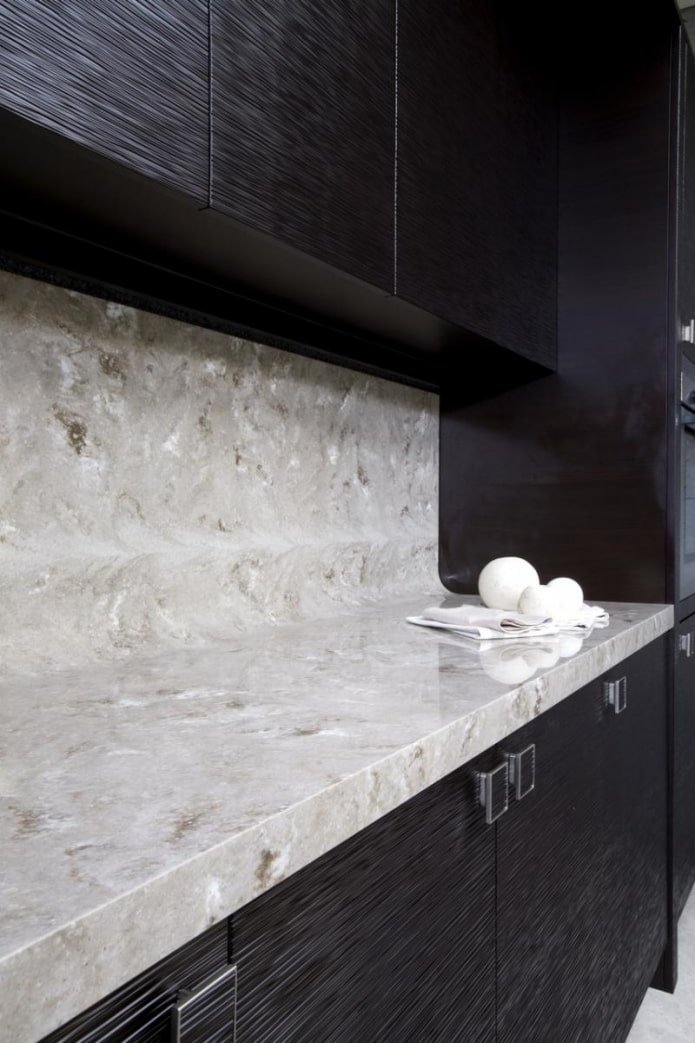
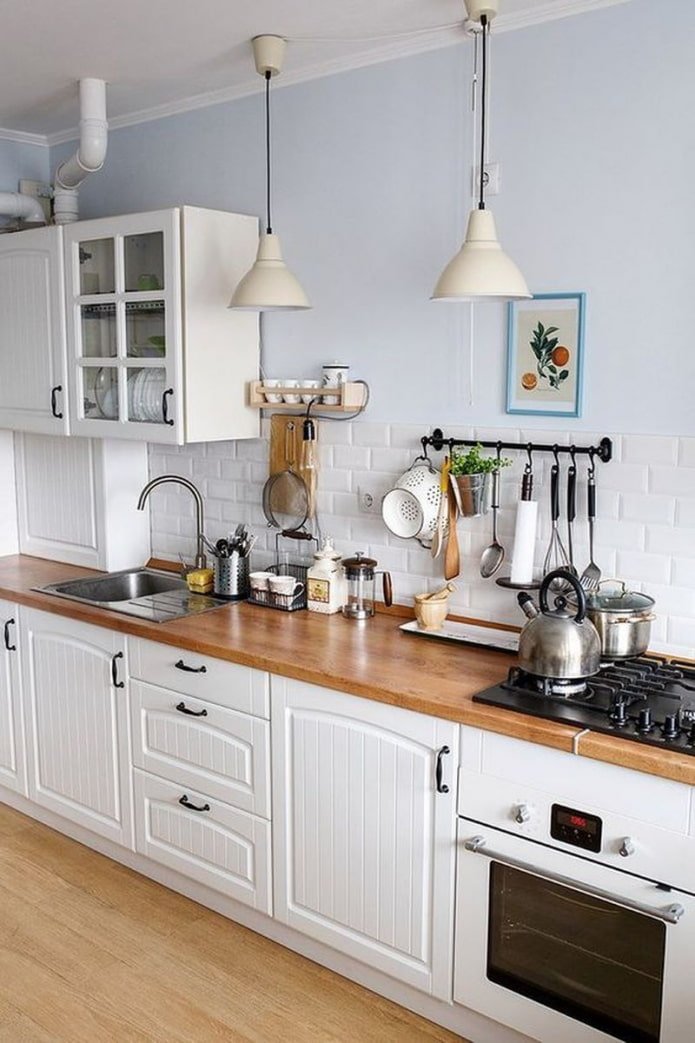
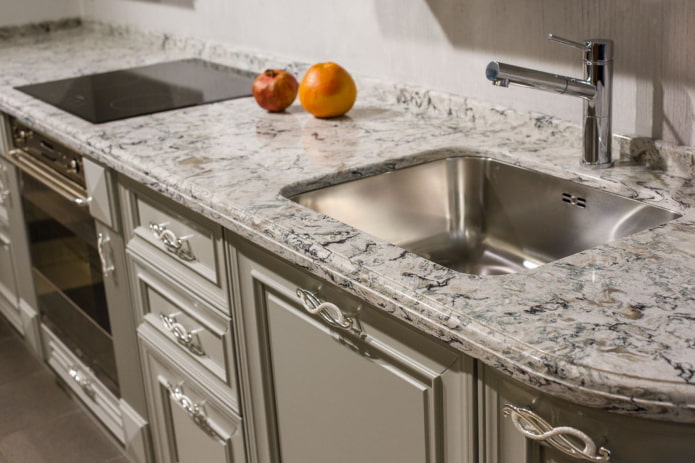
Hob
The most practical choice depends on the type:
- Gas. The simplest option is the most reliable – the white enamel surface is easy to clean, not afraid of either abrasives or chemicals. The main problem usually lies in the handles, or rather the joints with the stove – it is almost impossible to wash off the dirt from there after 1-2 years of use. To avoid this, choose the simplest design possible, without relief.
- Electric. Washing the heating elements on old models of stoves was torture, but wiping modern ceramic or induction ones is a pleasure. Since the choice of electric panels with touch control is huge, give preference to them: you won’t have to suffer with washing the handles. Another controversial point is the frame. On the one hand, grease and dirt accumulate in the joint. On the other hand, it protects the countertop from liquids that have run off the stove. As for the color, dark glass is more susceptible to fingerprints and dirt than light glass.
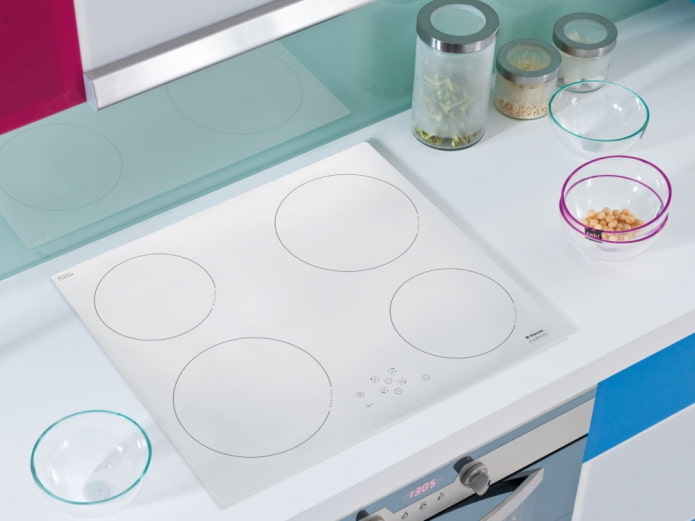
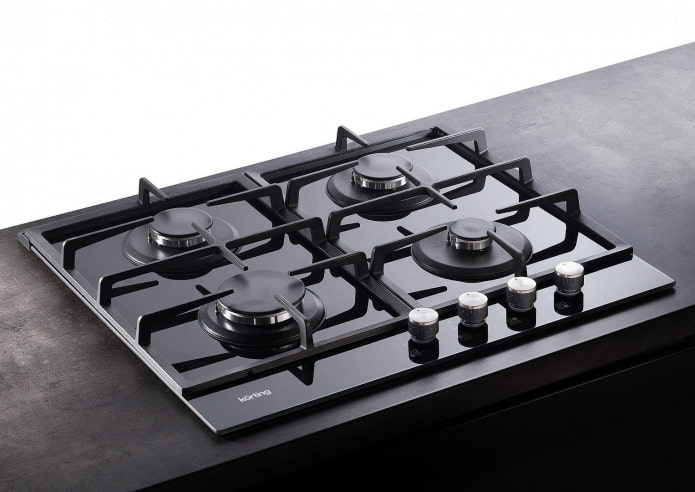
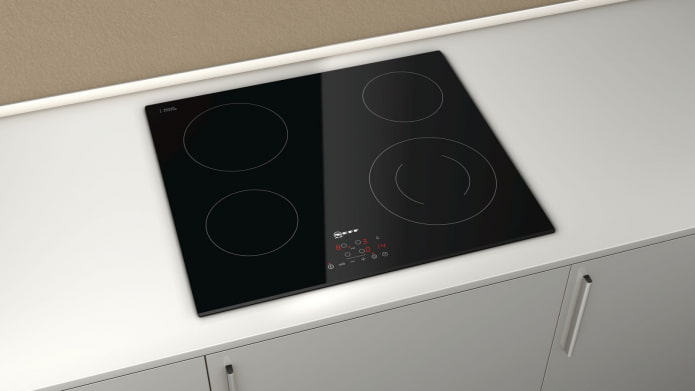
Equipment
Oddly enough, white appliances get dirty much less than black ones. This applies primarily to the refrigerator. If you cannot order a built-in one, choose a white model with a standard coating. The second option is a matte gray one with a prominent overhead (not built-in!) handle. Chrome and black ones are guaranteed to be covered in fingerprints and smudges.
Take an oven with touch control, just like a hob. A light color is better, but a smooth dark surface will also work: however, you will have to wash it more often.
Hoods that fit the concept of “practical” should not be dark and glossy. Look for models made of satin metal that meet 2 requirements:
- They do not have “shelves” on which soot settles. Built-in, island-type pipes, inclined ones will do.
- They have removable filters. These are easy to take out for cleaning or replacing with new ones.
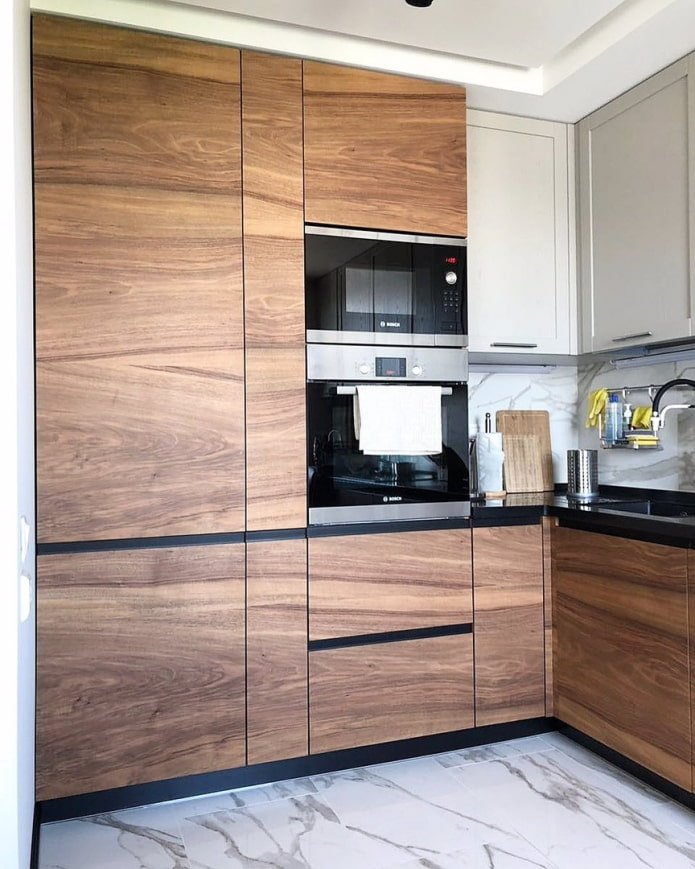
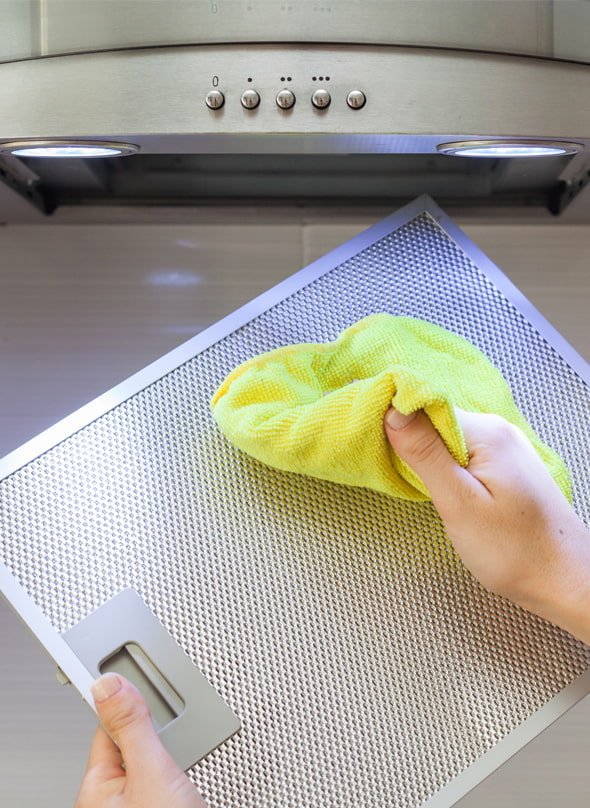
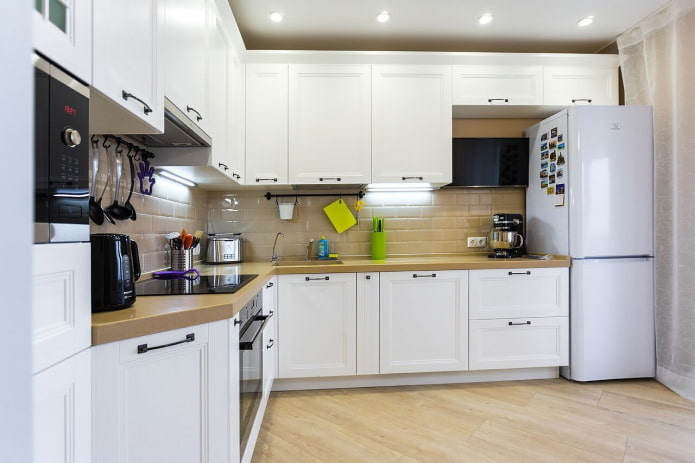
Sofa
When choosing a sofa, the color should not go to extremes: white or black will get dirty too quickly. Neutral shades (beige, gray), patterned fabrics are relevant: stains are almost invisible on them.
Among furniture fabrics, leather is considered the easiest to care for – artificial or natural. No need to wash, just wipe with a damp cloth. But leather has one drawback: it absorbs dyes, of which there are too many in the kitchen.
Other options that solve the problem of keeping the upholstery clean:
- Removable cover. Some manufacturers initially supply sofas with removable covers – you can wash them in a regular machine. If you already have a sofa, order a cover additionally: this trick will simplify the cleaning process in the future.
- Easy-to-clean fabrics. Easy Clean impregnation makes it much easier to choose upholstery. Firstly, it can be used on different fabrics: from burlap to velour. Secondly, it guarantees protection of the furniture: dirt will not be able to be absorbed inside, which means it will be easy to remove even from a white surface.
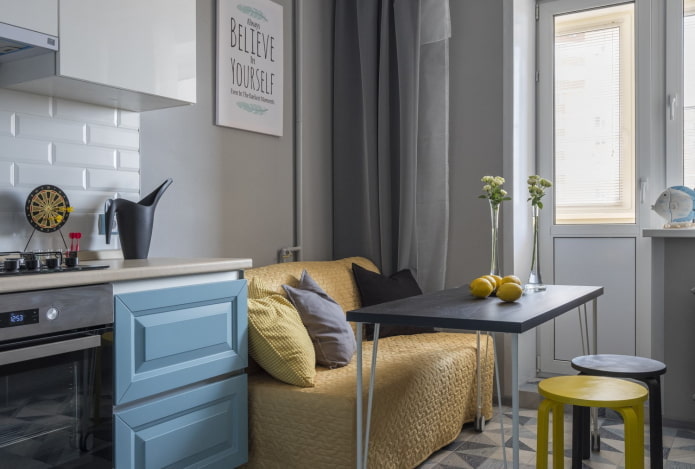
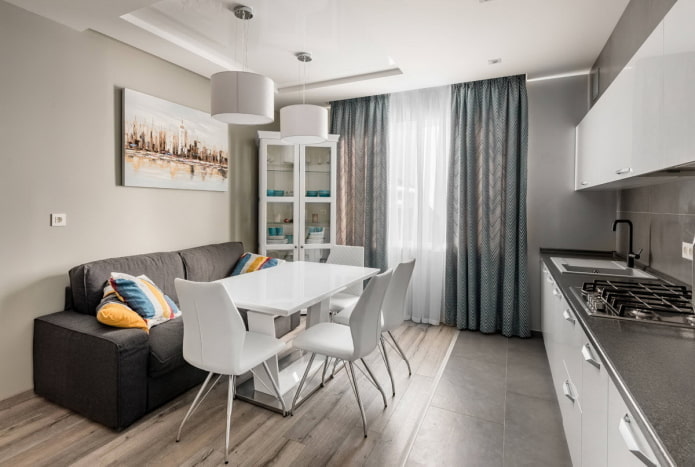
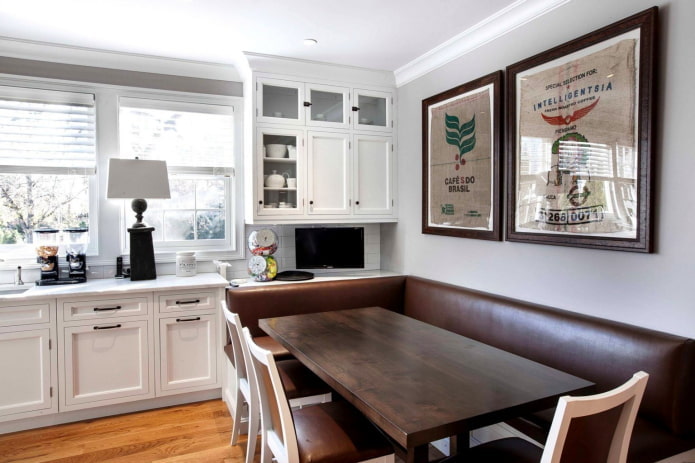
Floor
And the last important question is the floor covering. The material itself is not of decisive importance here. The main thing is that it is not carpet. PVC tiles, laminate, linoleum or tiles will do.
It is more important to pay attention to the shade. In the kitchen, things often fall on the floor, so you need a covering that will hide small mistakes between washing the floors. Say a strict no to white, black: choose medium-gaudy coverings. Imitation wood or patterned tiles.
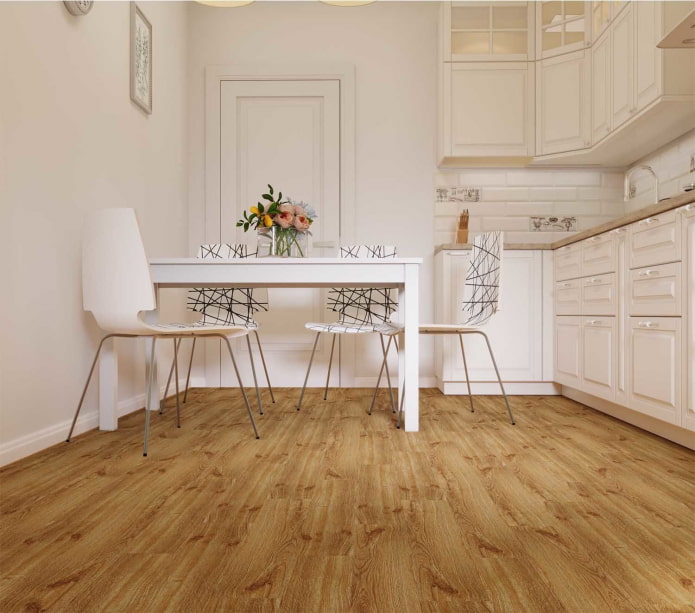
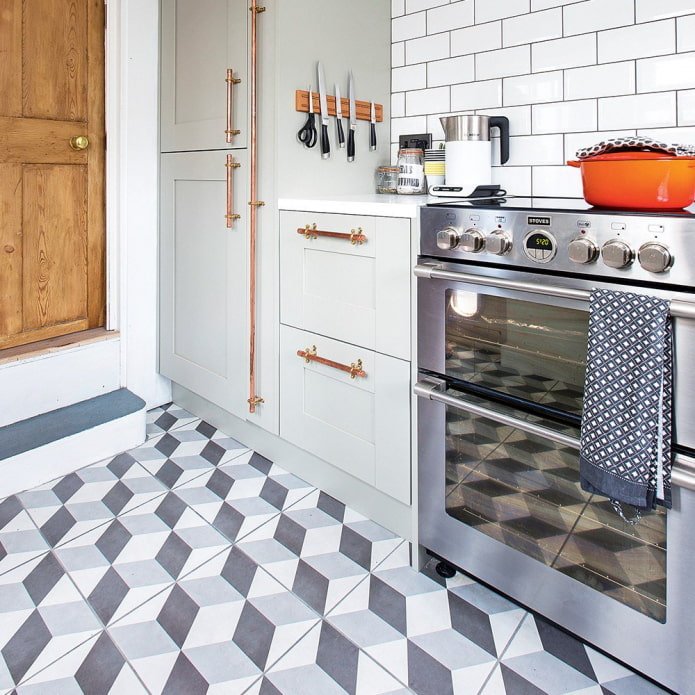
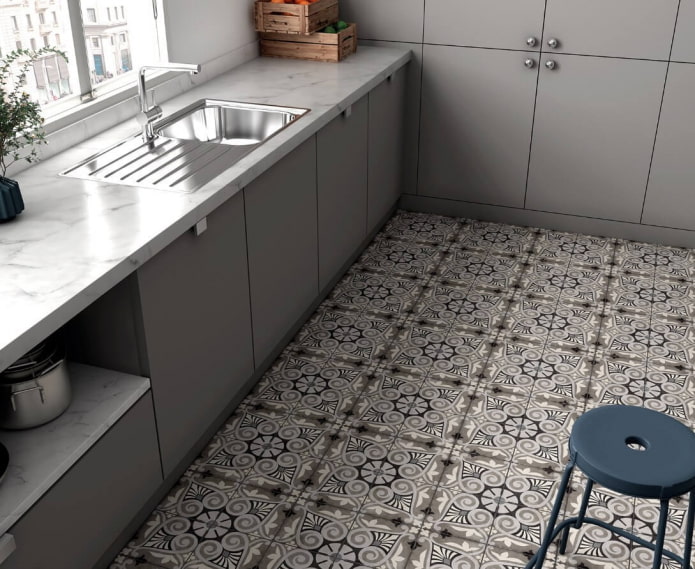
When choosing the material or color of the kitchen, evaluate the appearance and performance properties. Sometimes you will have to choose between beauty and practicality – think in advance, are you ready to sacrifice one in favor of the other?
Now reading:
- Folding table: more than 60 photos of modern ideas for the living room, kitchen and children’s room.
- Affordable Products from Fix Price for Garden and Vegetable Garden Decor
- Explore the Fiat Freemont: Stylish Versatility Awaits!
- Curtains on eyelets: more than 60 photos for decorating a hall, kitchen, bedroom and children’s room
- Eco-style in the interior: unique ideas and characteristics for each room.